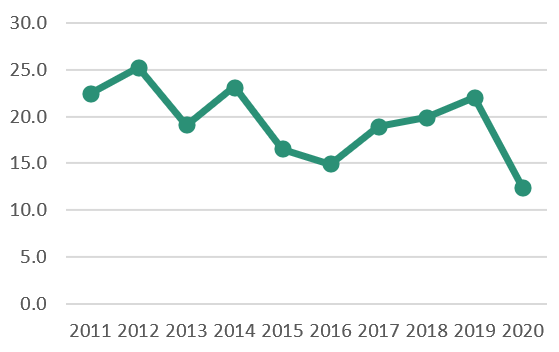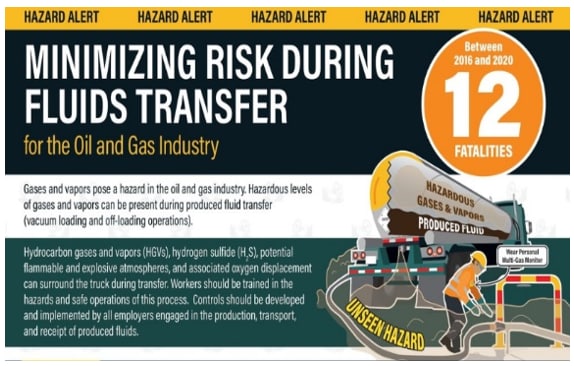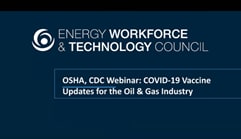Oil and Gas Extraction Program PPOP
The National Institute for Occupational Safety and Health (NIOSH) Oil and Gas Extraction Safety and Health Program works with partners in industry, trade associations, professional organizations, academia, and labor. The program focuses on efforts to:
- Reduce worker fatalities, with an emphasis on motor vehicle crashes
- Characterize physical and chemical exposure hazards
- Develop and evaluate engineering controls to improve worker safety and health
- Analyze surveillance data and conduct epidemiologic studies to identify leading causes of death and injury.
- Characterize exposures to hazardous agents, such as chemicals, minerals, and noise to better understand the hazards and risks.
- Develop and evaluate engineering controls for the workplace.
- Investigate possible mechanisms of disease in oil and gas workers through laboratory research.
- Communicate and distribute information to raise awareness of hazards and promote NIOSH recommendations.
- Published research article describing the US research needs related to fatigue, sleep, and working hours among oil and gas extraction workers.
- Published a series of nine research articles and a NIOSH science blog on animal studies examining the toxicological response to breathing in fracking sand and diesel exhaust.
- Contributed to the hazard alert Minimizing Risk During Fluids Transfer, published by the National Service, Transmission, Exploration & Production Safety (STEPS) Network, to raise awareness of the hazards associated with fluid transfer activities and identify protective measures for workers and employers.
- Coordinated the webinar, “COVID-19 Vaccine Updates for the Oil & Gas Industry,” providing updates on COVID-19 vaccines to 170 registrants in the oil and gas industry.
- Partnered with Occupational Health & Safety Magazine to give the webinar “Oil and Gas: Using Data to Understand and Address Safety and Health Issues,” demonstrating how NIOSH uses data to drive science.
- Hosted the Spring Health and Safety Summit 2022 providing state-of-the art knowledge on the control of workers’ exposures to noise and heat in the oilfield to 180 participants.
- Publish a series of articles highlighting cardiac events, heat stress, and substance use cases in the oil and gas industry.
- Publish results from hydrocarbon exposure studies during oil and gas extraction activities.
- Publish results from the NIOSH survey of oil and gas extraction workers including information on driving behaviors, working hours, hazardous substances, personal protective equipment, and company safety policies.
- Design a dust-control system for blending hoppers to reduce exposures to silica at hydraulic fracturing sites.
- Develop a hazard alert regarding Welding Fume Hazards & Controls.

“Mention of any company or product does not constitute endorsement by the National Institute for Occupational Safety and Health, Centers for Disease Control and Prevention.”
The Oil and Gas Extraction Program conducts research, forms partnerships, and develops and communicates practical solutions to improve safety and health in the oil and gas extraction industry. This snapshot shows recent accomplishments and upcoming work.

Source: BLS [2020] Census of Fatal Occupational Injuries. Washington, DC: U.S. Department of of Labor Statistics, https://www.bls.gov/cew/.
To learn more, visit
https://www.cdc.gov/niosh/programs/oilgas/
June 2022


